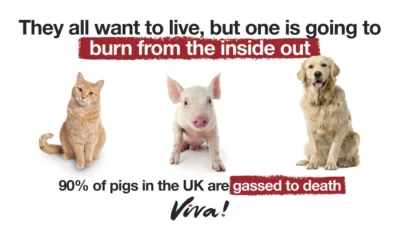Understanding the basics when it comes to UPFs

Ultra-processed foods have been a hot topic lately, with an alarming amount of misinformation being presented to consumers. Here, Dr Nicola Guest, a Nutrition Scientist at Oxford University, explains why not all UPFs are created equal and why plant-based meat can be part of a healthy diet.
As a registered Dietician with a PhD in Nutrition, I champion a science-led approach to the foods we eat. I started eating plant-based (including plant-based meat) four years ago, purely for environmental reasons, and plant-based meat – as a keen runner and weightlifter – has been useful in helping me meet my protein requirements without relying on animal meat alone. The current vilification of all UPFs as unhealthy is not scientifically justified, and my goal with this series is to help you understand that the health impact of processed foods depends on the specific food.
Any discussion about nutrition inevitably raises the question, “How processed is it?”. The level of processing, however, doesn’t necessarily indicate how healthy a food is. Processing simply means altering food from its original form through methods like pasteurization, canning, drying, and freezing to extend shelf life. This can range from basic preservation, like canning, to creating brightly colored and textured sweets.
In this piece we describe why “ultra-processed” is not a meaningful term to describe how healthy a food is or isn’t, and why many “ultra processed” foods – including Beyond Meat products – should not be lumped into the same category as cakes, pastries and high-fat ready meals.
In the UK, the Nova classification has been used to classify foods by their degree of processing. The system is by its very nature oversimplified. Many argue that it is not a scientifically relevant or useful way to describe the nutritional quality of foods.
Nova divides food into four categories:-
- Group 1: Unprocessed or Minimally Processed Foods Examples include fresh or frozen fruits and vegetables, grains, legumes, eggs, milk, plain yogurt, and crushed spices.
- Group 2: Processed Culinary Ingredients This group includes oils from crushed seeds, nuts, or fruits (such as olive oil), salt, sugar, vinegar, starches, honey, syrups from trees, butter, and other substances used for seasoning and cooking.
- Group 3: Processed Foods Examples are cheese, canned vegetables, salted nuts, fruits in syrup, and dried or canned fish.
- Group 4: Ultra-processed foods: Examples are: fizzy drinks; sweet, fatty or salty packaged snacks; sweets; biscuits, pastries, margarine, hot dogs and other reconstituted meat and plant-based products.
Focusing solely on processing to determine a food’s healthiness is misleading. For instance, choosing foods with a small number of ingredients is not a reliable measure of healthiness. Butter, with just one ingredient, is high in saturated fat, and guidelines recommend minimizing its consumption.
The category of ultra-processed foods (UPFs) is the most broad and is not clearly defined. Explained as “formulations of ingredients, mostly of exclusive industrial use, typically created by a series of industrial techniques and processes,” this broad category may include everything from crisps and sweets to tofu and hummus [however, the latter two are generally not considered to be UPFs and are a good source of healthy nutrients].
While the UPF category does include clearly unhealthy options like cola and high-sugar snacks, it also contains foods that evidence suggests can be beneficial for health. When UPFs are split into categories, the “usual suspects” like sweets and cakes and microwaveable pizza are associated with diseases like type 2 diabetes, but others, including plant-based milks, Greek yoghurt and plant-based meat are not.
This point was proven illustrated in a recent study backed by the World Health Organisation and published in The Lancet. Researchers looked at the dietary habits of 266k participants across seven different countries for 11 years and found that there was an increased risk of multimorbidity, cancer and cardiometabolic disease linked to processed animal-based products and sweetened beverages. This same association was not found for plant-based meat and breads or cereals. By looking separately at different groups of food that are usually lumped together as “ultra-processed,” the new study was unique in being able to identify that different types of processed foods had different effects on long-term health.
In conclusion, the health impact of processed foods depends on the specific food, not the degree of processing. I look forward to exploring this topic in more detail, so we can start to change the narrative around processing to a more helpful and scientifically accurate one!




